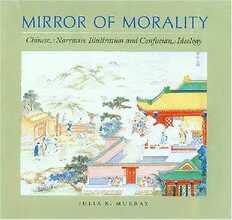
Mirror of Morality: Chinese Narrative Illusration and Confucian Ideology PDF
209 Pages·2007·24.698 MB·English
Most books are stored in the elastic cloud where traffic is expensive. For this reason, we have a limit on daily download.
Preview Mirror of Morality: Chinese Narrative Illusration and Confucian Ideology
Description:
Mirror of Morality takes an interdisciplinary look at an important form of pictorial art produced during two millennia of Chinese imperial rule. Ideas about individual morality and state ideology were based on the ancient teachings of Confucius with modifications by later interpreters and government institutions. Throughout the imperial period, members of the elite made, sponsored, and inscribed or used illustrations of themes taken from history, literature, and recent events to promote desired conduct among various social groups. This dimension of Chinese art history has never before been broadly covered or investigated in historical context.The first half of the study examines the nature of narrative illustration in China and traces the evolution of its functions, conventions, and rhetorical strategies from the second century BCE through the eleventh century. Under the stimulus of Buddhism, sophisticated techniques developed for representing stories in visual form. According to well-entrenched conventional wisdom, the emergence of literati painting in the following era caused critical interest and esteem to shift from objective modes of representation to more subjective forms of personal expression. While tracing changes in the social functions and cultural positions of narrative illustration, the second half of the book argues that narrative illustration continued to play a vital role in elite visual culture. Narrative pictures from the twelfth through early twentieth centuries are presented as case studies to show how emperors, officials, scholars, and private individuals used depictions of moralized stories to address concerns about political legitimacy, standards of governance, public morality, and personal cultivation. Correctly interpreted, models and cautionary examples from the past were a "mirror" that revealed the cosmic principles underlying human affairs, and pictures made these precepts visible to all. Besides offering new and insightful readings of familiar paintings, the work brings into discussion a number of little-known works from the later imperial period. Julia Murray's close examination of the patronage and reception of these pictures challenges established views on the tastes and values of elite, literate men of the time. By making judicious and original connections between literary and pictorial analyses and specific historical contexts, she has written an authoritative work that not only demonstrates the continuing vitality and variety of later Confucian narrative illustration, but also points up some noteworthy changes in the political landscape of visual culture between the Ming and Qing periods.
See more
The list of books you might like
Most books are stored in the elastic cloud where traffic is expensive. For this reason, we have a limit on daily download.
